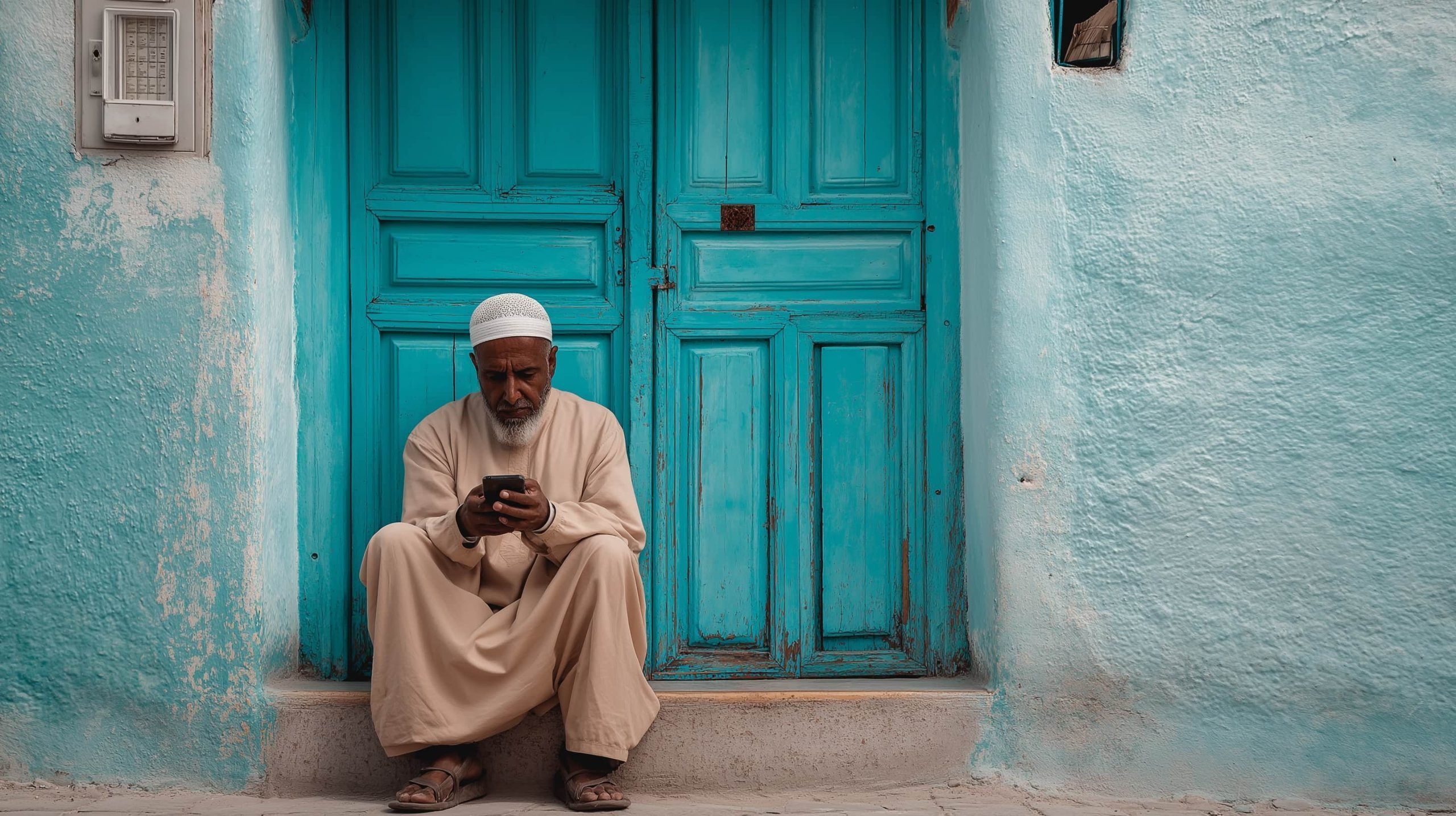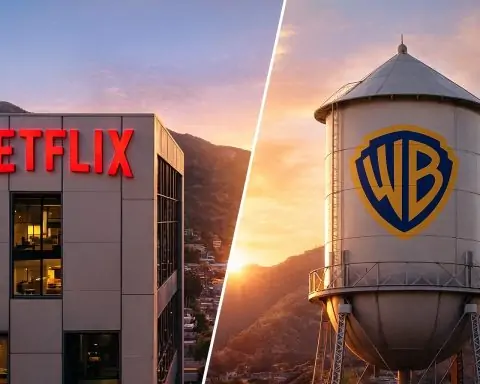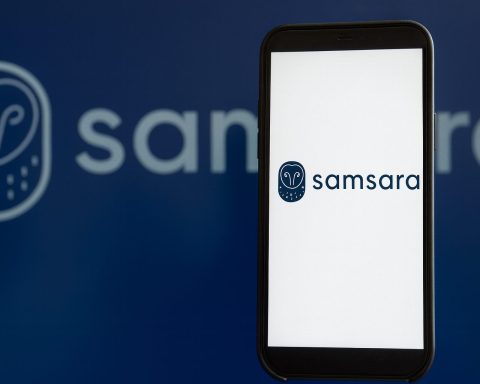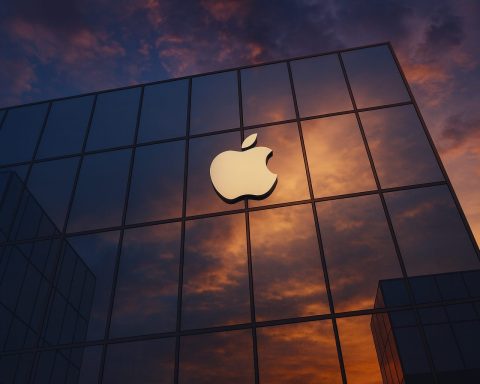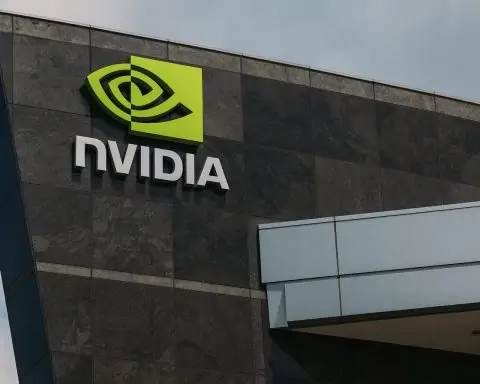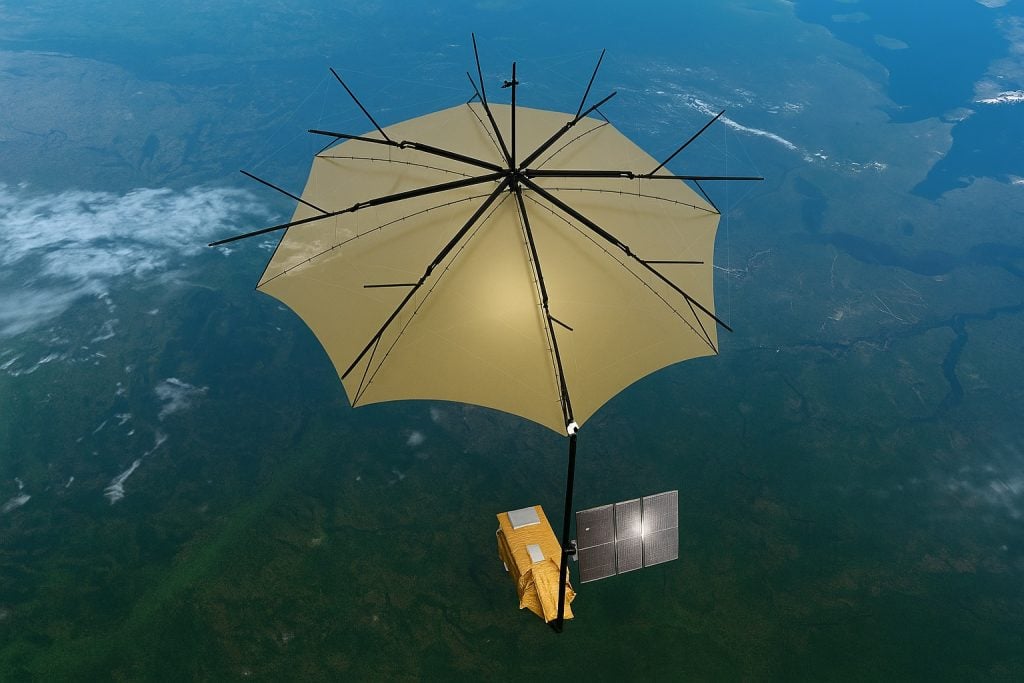- As of early 2024, about 9.96 million Tunisians were internet users, roughly 79.6% of the population.
- In January 2024, Tunisia had 16.73 million active mobile connections, equal to 133.7% of the population.
- 99.9% of the population is covered by mobile signals, with 4G reaching about 94.9% of inhabitants.
- Tunisie Telecom’s fiber backbone spans roughly 50,000 km, and late-2024 initiatives connected 2,900 homes in Tataouine (~7,000 users) via fiber at about $160,000.
- International bandwidth capacity grew from 82.5 Gbps in 2012 to about 1,710 Gbps in 2023.
- 5G licensing occurred in September 2024, initial licenses were granted in November 2024, and commercial 5G service began in February 2025, with 5 MHz allocated in the 700 MHz band and 100 MHz in the 3.5 GHz band per operator, plus a June 2024 MoU with South Korea for 5G cooperation.
- The three major operators and their shares are Tunisie Telecom 39.7%, Ooredoo Tunisia 37.4%, and Orange Tunisia 22.9% (based on 2022 data).
- A Starlink pilot was conducted in three cities (Tunis, Ariana, Gabès) starting October 2023 after a July 2023 government MoU, with commercial deployment contingent on licensing by 2025.
- The White Zones program (2017–2020) extended mobile broadband to 94 rural areas, reaching about 180,000 residents, 164 schools, and 59 health centers by May 2020.
- By 2021, 98.9% of the population had at least 2G coverage and 91% had 4G, while Edunet was 75% complete by early 2024 (connecting 3,307 educational institutions and 1.5 million students) and a May 2020 World Bank GovTech loan of $270 million supported upgrading government digital infrastructure.
Overview of Internet Infrastructure in Tunisia
Tunisia’s internet infrastructure has grown significantly in recent years, transforming the country from a digital desert into a connected society. Fixed broadband, mobile networks, and an expanding fiber-optic backbone form the pillars of Tunisia’s connectivity. As of early 2024, about 9.96 million Tunisians are internet users – roughly 79.6% of the population [1]. Fixed broadband subscriptions reached approximately 1.7 million lines by late 2023 [2], while mobile connectivity is nearly universal. There were 16.73 million active mobile connections (SIMs) in January 2024 – 133.7% of the population (many people have multiple SIMs) [3]. Importantly, 99.9% of the population is covered by mobile network signals (2G/3G/4G), with 4G alone reaching about 94.9% of inhabitants [4]. This broad coverage means even remote villages now fall within range of at least a basic mobile internet signal.
Fixed broadband in Tunisia historically relied on ADSL (copper telephone lines), but the country is steadily upgrading to fiber-optic connectivity. Tunisie Telecom’s fiber network spans ~50,000 km across the country [5], forming a high-capacity backbone that links cities and towns. Fiber-to-the-home (FTTH) deployment is still in progress – concentrated in urban centers – yet recent initiatives are extending fiber into less-served regions. For example, in late 2024 the national operator launched a program to connect 2,900 homes (about 7,000 users) in the southern Tataouine region via fiber [6] [7]. This ~$160k investment in Tataouine is part of a broader strategy to modernize infrastructure nationwide with high-speed fiber, improving fixed internet quality outside the capital [8] [9]. Thanks to such efforts, Tunisia’s international bandwidth capacity expanded from only 82.5 Gbps in 2012 to about 1,710 Gbps in 2023 [10], vastly increasing the country’s data handling capabilities and paving the way for faster, more reliable connections.
Mobile broadband is the primary mode of internet access for most Tunisians, given the high mobile penetration and affordable data plans. Fourth-generation (4G LTE) networks are widespread, and the country has been preparing to launch 5G (fifth-generation) services as the next leap forward (detailed later). The robust mix of fixed and mobile infrastructure means Tunisia’s ICT backbone is relatively well-developed for the region [11]. However, the quality of last-mile connections still varies: in cities, users increasingly enjoy fiber or 4G speeds, while rural users may be limited to older DSL lines or 3G signals. Overall, the “digital desert” is awakening – Tunisia has laid the groundwork of cables, towers, and spectrum to connect nearly its entire population to the internet, and ongoing upgrades continue to extend both the reach and capacity of its networks.
Internet Providers: Major ISPs and Services
Tunisia’s internet access market is served by a handful of major providers, each contributing to the expanding frontier of connectivity. The telecom sector is liberalized and competitive, with three primary operators dominating both mobile and broadband services:
- Tunisie Telecom (TT) – The historic incumbent. Tunisie Telecom is a state-backed operator and the leading provider of fixed-line and international internet connectivity [12]. It operates legacy copper lines, a growing fiber network, and a nationwide mobile network. TT manages at least three submarine fiber-optic cables for Tunisia’s global internet access, including a direct 112-mile cable to Italy [13]. In the mobile market, TT holds about 39.7% share (2022), making it one of the top two carriers [14]. On the fixed internet side, TT (and its ISP subsidiaries like Topnet) faces competition but remains a key player, recently holding 21.1% of the fiber broadband market as of mid-2024 [15]. Tunisie Telecom leverages its infrastructure advantage – its backbone and international gateways – to deliver DSL and fiber broadband to homes and businesses. Despite being the former monopoly, today it competes on a level field with private rivals [16]. Notably, TT is actively expanding fiber-to-the-home offerings; its 2025 plan includes 22 new fiber projects in the Tataouine area alone [17] [18].
- Ooredoo Tunisia – The mobile market leader. Ooredoo (formerly Tunisiana) is a Qatari-owned operator that commands roughly 37.4% of the mobile subscriber market [19]. Ooredoo has nationwide 2G/3G/4G coverage and is often ranked #1 in mobile customer base. It also provides fixed wireless and fiber broadband services under the Ooredoo brand (sometimes in partnership with ISPs). Ooredoo has invested in infrastructure, including international links – in early 2024, Ooredoo Tunisia lit up the new “Ifriqya” subsea fiber-optic cable to improve its network capacity and service quality [20]. This gives Ooredoo its own high-speed pipeline to the global internet, reducing reliance on sharing capacity. As a mobile-focused ISP, Ooredoo’s broadband offerings often use 4G/5G technology to deliver home internet (via routers or dongles), especially in areas without fiber. Ooredoo has been profitable and is a major competitor to Tunisie Telecom in both urban and rural areas.
- Orange Tunisia – The Franco-Tunisian challenger. Orange Tunisia is part of the Orange/France Télécom group, with a 49% French ownership and 51% Tunisian (the company’s shares were partially nationalized after 2011) [21]. Orange holds about 22.9% of the mobile market [22] and offers a range of services from mobile data plans to ADSL and fiber for households. Orange was the first to launch 3G in Tunisia (in 2010) and has a reputation for innovation. It does not enjoy the same scale as TT or Ooredoo in mobile, but it differentiates with quality of service and converged offers (mobile + home internet bundles). Orange Tunisia is also investing in Tunisia’s future connectivity: it partnered with a consortium building the Medusa Submarine Cable System, a major undersea cable that will link Tunisia to several Mediterranean countries. Construction of the Medusa cable is underway and expected by end of 2025 [23], with Orange and Tunisie Telecom both taking part in segments of this project [24] [25]. By connecting Tunisia (at Bizerte) to Marseille with a new 20 Terabit-per-second link, Medusa will strengthen international bandwidth and resilience, supporting Orange’s and others’ networks [26].
- Other ISPs and entrants – In addition to the big three, Tunisia has a few smaller service providers. Topnet is a prominent ISP (now a subsidiary of Tunisie Telecom) known for fixed internet packages (DSL and fiber) for homes and businesses. GlobalNet, HexaByte, and Planet are other ISPs that historically offered ADSL and now fiber in certain areas. Their market share is modest, often serving niche or enterprise clients. In the mobile space, Lycamobile launched as an MVNO (virtual operator) using Tunisie Telecom’s network; however, its impact is minimal (Lycamobile’s share is “insignificant” as of 2022) [27]. Overall, the Tunisian ISP landscape is characterized by three integrated operators (TT, Ooredoo, Orange) that provide the bulk of mobile and fixed internet services, alongside a handful of smaller ISPs and resellers. All major operators have extensive coverage footprints – by policy, each was required to extend service nationwide, so urban customers typically have a choice of providers, whereas some rural locales might effectively be served only by Tunisie Telecom’s infrastructure [28].
Coverage Maps & Performance: All three mobile operators cover the vast majority of Tunisia’s territory, as reflected by the 99%+ population coverage statistic [29]. In practice, 4G coverage is strong in cities and along coastal regions, while some remote interior or desert areas may drop to 3G or 2G speeds. Each operator publishes coverage maps on their websites, which indicate that even the sparsely populated Saharan zones have at least basic coverage via 2G/3G. For fixed broadband, ADSL is available in most towns (where telephone lines exist), and fiber optic coverage is growing in major cities (Tunis, Sfax, Sousse, etc., have active FTTH deployments) as well as select smaller cities like Gabès or Tataouine as recent projects roll out [30] [31]. However, rural homes far from exchanges often rely on mobile data or satellite for internet, since laying new cables to isolated villages can be cost-prohibitive.
Pricing and Packages: Internet access in Tunisia is relatively affordable by regional standards [32]. The market offers a wide variety of packages at different speeds and data allowances. As of 2021, for example, fixed ADSL plans ranged from about 10.5 Tunisian dinars/month (∼$3.80) for a 4 Mbps service up to ~41.9 TND/month ($15) for 20 Mbps DSL [33]. These prices, heavily subsidized in local currency, made basic home internet accessible to middle-class households. (Note: 1 USD ≈ 2.75 TND in 2021.) On the mobile side, data is often sold in pre-paid bundles. In late 2020 the big operators charged roughly 5 TND (~$1.80) for a 25 GB top-up (this was after a small price hike of 5 TND on large bundles that year) [34]. To illustrate affordability, 1.5 GB of mobile data cost around 1.28% of GNI per capita in 2020, well within the affordability target set by the UN (≤2% of income) [35] [36]. In practical terms, 1 GB of data might cost only about $0.50-$1 in Tunisia’s market.
All three main operators frequently run promotions and offer “unlimited night” plans or combined fiber + mobile deals to attract customers. While entry-level prices are low, higher-speed plans (e.g. fiber 100 Mbps or large mobile data plans) can become relatively expensive for the average Tunisian. Surveys show mixed feelings on value: around 53% of Tunisians were unsatisfied with mobile data pricing in 2019 even though 63% were satisfied with service quality [37]. This suggests that while internet is available, the cost of heavy usage can strain budgets. The government has generally maintained VAT and telecom taxes at reasonable levels to keep internet affordable, as part of its digital inclusion efforts.
Government Initiatives and Regulatory Framework
The Tunisian government plays an active role in expanding internet access, both through policy and direct initiatives. The regulatory environment is overseen by the Ministry of Communication Technologies (MCT) and the Instance Nationale des Télécommunications (INTT) – Tunisia’s independent telecom regulatory authority. The INTT ensures fair competition, allocates spectrum, and monitors service quality. Tunisia adheres to WTO telecom commitments, offering full market access and national treatment to foreign investors [38]. This allowed international companies like Orange and Ooredoo to operate in Tunisia’s telecom sector since the 2000s. Notably, no significant competitive advantage is given to the state-owned Tunisie Telecom by regulators – all operators are expected to compete on equal footing [39]. This regulatory fairness has fostered a “buoyant” telecom market with multiple players and steady growth [40].
Digital Strategies: The government has outlined clear strategies to drive connectivity. The “Digital Tunisia 2020” program (a five-year plan through 2016–2020) implemented numerous regulatory reforms and infrastructure projects aimed at improving internet access nationwide [41]. Building on that, Tunisia launched a “Digital Tunisia 2025” plan, as part of its National Digital Transformation Strategy, to continue accelerating broadband rollout and the digitization of services [42]. Under this strategy, the government’s goals include raising the percentage of households with internet access (fixed or mobile) from just over 50% a few years ago to 60% by 2024 [43], expanding e-government services, and preparing the economy for advanced technologies like IoT and AI. There is also a strong emphasis on “digital inclusion” – ensuring that underserved communities, women, and people with disabilities have access to the internet and digital skills.
Infrastructure Programs: One flagship inclusion program was the “White Areas” project launched in 2017 to close the urban-rural connectivity gap. The MCT assigned Tunisie Telecom to bring mobile and internet coverage to 94 underserved rural areas (so-called “white zones” with no service) over five years [44]. By May 2020, about 90% of these zones had been covered, extending new mobile broadband coverage to some 180,000 residents in remote localities, along with 164 schools and 59 health centers that previously lacked connectivity [45]. This project involved building new cell towers and infrastructure with government subsidies, effectively erasing most remaining coverage blind-spots on the map. Another major initiative is “Edunet 10”, launched in 2023, aiming to connect 3,307 educational institutions and 1.5 million students to high-speed fiber internet [46]. By early 2024, the MCT reported Edunet was already 75% complete in several governorates [47] – meaning thousands of schools now have fiber-optic broadband, enabling e-learning and digital resources for students. Similarly, in May 2020 Tunisia secured a $270 million “GovTech” loan from the World Bank to upgrade government digital infrastructure, part of which is dedicated to providing internet to 2,250 schools, 250 social welfare offices, and 55 public service institutions [48]. These investments underscore a national commitment to wire up public facilities and facilitate digital education and e-government.
The government also pursues public Wi-Fi initiatives. The Tunisian Internet Agency (ATI), a state-run ISP, has worked with municipalities to offer free outdoor Wi-Fi in dozens of city centers and public parks [49]. By the end of 2020, about 40 municipalities had partnered to provide citizens with free internet hotspots (no registration needed) in busy areas like downtown plazas [50]. These Wi-Fi zones help citizens get online (albeit at limited speeds) if they cannot afford a mobile data plan.
On the regulatory front, Tunisia has updated laws to encourage investment and protect users. A notable move was establishing the first “Level 4” license in 2017 for an open-access fiber infrastructure operator [51]. This license (awarded to a consortium including a Turkish firm and the ATI) provides high-speed broadband backhaul to ISPs, essentially allowing new infrastructure sharing and potentially lowering costs for providers to reach more areas. Such regulatory innovations aim to increase competition in the wholesale market and improve the quality of service.
5G Deployment Status: A key element of Tunisia’s current telecom policy is the introduction of 5G (fifth-generation mobile technology). The first 5G test pilots were carried out back in 2020 by Tunisie Telecom, Ooredoo, and Orange, which demonstrated speeds above 2.2 Gbps in lab conditions [52] [53]. However, the commercial rollout of 5G was delayed as Tunisia took a cautious approach, studying the economic and security implications [54]. In 2023–2024, the government crafted a comprehensive 5G roadmap, and the Ministry of Communication Technologies officially announced a timeline: September 2024 for licensing and November 2024 for initial 5G launch [55] [56]. This schedule was met – in late November 2024, licenses were granted to the three operators, and they began final preparations for rollout [57]. Tunisia’s regulators allocated each operator 5 MHz in the 700 MHz band and 100 MHz in the 3.5 GHz band for 5G, with additional spectrum blocks to be opened in phases [58] [59]. Commercial 5G service went live in Tunisia by February 2025, making it one of the first in North Africa to do so (ahead of neighboring Algeria and Morocco) [60] [61]. By mid-February 2025, Tunisie Telecom and Ooredoo had launched their initial 5G offers, and Orange followed shortly after [62] [63]. The introduction of 5G is expected to boost mobile broadband speeds dramatically and enable new use-cases in Tunisia’s economy. The government’s National Digital Transformation Strategy 2025 explicitly links 5G with goals like smart agriculture, intelligent transport, e-health, and Industry 4.0 [64] [65]. Officials predict that by 2027, about 50% of Tunisians will have 5G coverage as networks expand in phases [66]. Notably, Tunisia has sought international partnerships for 5G: in June 2024, Tunisia signed an MoU with South Korea to collaborate on 5G deployment, tapping Korean expertise to ensure a secure and effective rollout [67] [68].
In summary, Tunisia’s government has been proactive in crafting a favorable environment for internet growth. Through strategic plans (Digital Tunisia 2025), targeted infrastructure projects (white zones, Edunet, GovTech), and forward-looking regulation (5G licensing, open access fiber), it aims to bridge the digital divide and future-proof the country’s connectivity. While Tunisia does face political and economic challenges, the telecom sector’s regulatory framework is considered one of the more advanced in Africa [69], balancing state involvement with healthy competition and innovation. This sets the stage for the next frontier of internet expansion, including new satellite services and emerging technologies.
Satellite Internet Availability in Tunisia
As Tunisia pushes to connect every corner of the country, satellite internet is emerging as a compelling piece of the puzzle – especially for remote and rural areas beyond the reach of fiber or even mobile towers. In 2023, Tunisia took concrete steps to explore low-earth orbit (LEO) satellite broadband by partnering with SpaceX’s Starlink. In July 2023, the Ministry of Communication Technologies signed an agreement with Starlink to conduct a pilot project – a groundbreaking move to test satellite internet in the local context [70] [71]. Under this partnership, Starlink provided equipment and connectivity for a three-month trial in three cities (Tunis, Ariana, and Gabès) starting in October 2023 [72]. These pilot locations included both urban and semi-urban areas, chosen to evaluate how Starlink’s high-speed, low-latency internet compares to traditional ISPs in Tunisia [73]. The goals of the trial were multifold: to familiarize engineers and officials with satellite technology, assess performance, and importantly, to inform the regulatory and licensing framework needed for commercial satellite services [74] [75].
During the pilot, Starlink terminals were installed to serve as public hotspots or in institutional settings, allowing stakeholders to observe real-world speeds and reliability. This experimentation phase was critical because, according to Starlink’s own rollout schedule, Tunisia was not originally slated to receive Starlink service in 2024 (it was listed as “planned” but not active that year) [76]. The government’s proactive pilot essentially confirms that full commercial deployment would come only after proper licensing and study – likely in 2025. By the end of 2024, Tunisia had drawn up licensing procedures for satellite internet providers, preparing the legal ground to authorize services like Starlink officially [77]. Once regulatory approvals are in place, Starlink can begin selling its service to consumers and businesses in Tunisia.
What will Starlink mean for Tunisia? Potentially, a game-changer for connectivity in sparsely populated regions. Starlink’s network of LEO satellites can beam >100 Mbps broadband to virtually any location with a clear sky. This could bring fast internet to desert oil fields, mountain villages, or nomadic communities that today rely on patchy 2G signals at best. It can also serve as a backup internet for critical infrastructure, improving resilience during natural disasters or network outages [78] [79]. However, cost is a consideration. In other countries where Starlink is live, the service isn’t cheap by local standards. For example, in Nigeria (Starlink’s first African market in 2023), Starlink’s standard plan costs about $25 per month and requires a one-time hardware purchase around $290 (for the dish and router) [80] [81]. Those prices were after a significant price cut (Starlink roughly halved its hardware fee in Africa in 2024 to spur adoption) [82]. If similar pricing comes to Tunisia, Starlink would be considerably more expensive than typical DSL or mobile plans on a per-month basis. Thus, initially it may target enterprises, government, or affluent rural users who have no other viable broadband option.
It’s worth noting that Tunisia’s telecom companies themselves showed interest in Starlink. Reports suggest the local operators initially wanted to resell Starlink services under their own brands, though this was not the model SpaceX preferred [83]. Instead, Starlink tends to sell directly or through approved distributors. This regulatory dance has slightly delayed Starlink’s entry as both the government and SpaceX work out terms that fit within Tunisian law (for instance, concerning spectrum use and ground stations). The pilot in late 2023 essentially served as a proving ground to address these concerns.
Aside from Starlink, other satellite internet options either exist or are on the horizon for Tunisia. Traditional geostationary satellite broadband has been available via VSAT providers for years. Companies like Eutelsat Konnect and regional VSAT firms offer C-band or Ku/Ka-band satellite links that can cover Tunisia. For example, Eutelsat’s Konnect service claims to deliver 50–100 Mbps to users across 22 African countries [84], and VSAT integrators market solutions specifically for Tunisia’s remote businesses (NGOs, oil & gas sites, etc.) [85]. However, these legacy satellite services have high latency (600ms+), limited data caps, and tend to be quite costly (often hundreds of dollars per month) – thus used mainly by corporations or government in areas with no terrestrial connectivity. Their consumer uptake in Tunisia is minimal.
Newer satellite constellations beyond Starlink may also play a role soon. OneWeb, a LEO constellation backed by the UK, is coming online and could cover North Africa in 2024–2025. Likewise, regional initiatives or partnerships (perhaps with Thuraya or other Middle East satellite operators) could bring alternatives. In fact, Tunisia’s government has been generally receptive to satellite solutions as part of its “national strategy for digital infrastructure”, explicitly looking at ways to connect the “landlocked and remote” population segments via satellite [86]. This is in line with Tunisia’s broader aim to ensure no community is left offline.
In summary, satellite internet in Tunisia is at an exploratory stage, but poised to expand. The Starlink pilot in 2023 marked the awakening of this new frontier. Once fully launched, satellite broadband will complement Tunisia’s terrestrial networks by covering the hardest-to-reach locales and providing redundancy. The government is carefully crafting regulations – from spectrum allocation to import of user terminals – to integrate satellite providers into the market [87] [88]. If costs can come down over time, even ordinary households in rural Tunisia might one day have the option of a fast satellite connection, truly bringing the internet to “the last mile” of the digital desert.
Rural vs. Urban Internet Access Disparities
Like many countries, Tunisia grapples with a digital divide between its well-connected urban centers and its more isolated rural areas. Historically, urban areas – especially the northern and coastal regions – enjoyed much better internet access than the interior. Cities such as Tunis (the capital), Sfax, Sousse, and Bizerte have long been the first to receive new technologies: from early ADSL broadband to 4G LTE. These cities benefit from dense infrastructure, higher average incomes, and multiple ISPs competing for customers. In contrast, rural communities and the interior (central and southern governorates) lagged in both coverage and quality. In the past, some remote villages were “white zones” with no mobile signal at all, and many others had only 2G voice service with no data. People outside major cities also had fewer choices of provider – often only the incumbent (Tunisie Telecom) had coverage in those areas [89].
This urban-rural gap is gradually narrowing thanks to concerted efforts. As noted, the government’s White Zones program (2017–2020) was a major push to eradicate any coverage gaps. By mid-2020, 90% of previously uncovered rural sections got mobile broadband coverage (3G/4G), bringing tens of thousands of rural residents online for the first time [90]. This dramatically improved basic access: according to the telecom regulator, by 2021 98.9% of Tunisia’s population was covered by at least a 2G signal, and over 91% had 4G available [91] [92] – figures that have only improved since. So in terms of coverage, the rural-urban divide has been reduced to a few remote pockets. Even many small villages now have a cell tower nearby.
However, quality and usage disparities remain. Urban households are far more likely to have a fixed broadband connection (DSL or fiber) and Wi-Fi at home. For instance, in 2019 about 51.5% of Tunisian households had internet at home [93], but this average hides the split: most connected homes were in cities. Rural households often rely solely on mobile data, which can be slower or more expensive per gigabyte. The government’s goal to raise household connectivity to 60% by 2024 implies focusing on rural uptake [94]. Initiatives like subsidizing computer equipment or offering discounted rural internet packages have been introduced to encourage adoption outside cities. Additionally, the state rolled out free public Wi-Fi hotspots in some rural town centers (often at municipal buildings or youth centers) to provide at least a basic internet amenity for those who can’t afford subscriptions [95].
Speed and network quality also differ. In urban areas (e.g. greater Tunis), 4G signals are strong and fiber broadband up to 100 Mbps is available in many neighborhoods. Meanwhile, rural users might be on older 3G networks or long copper lines delivering only a few Mbps. In 2020, a significant share of rural ADSL users still had sub-8 Mbps speeds (nearly 30% of fixed broadband users had <8 Mbps connections in 2020, and almost all others were below 16 Mbps) [96]. These slow speeds were mostly in less developed regions using old ADSL infrastructure. Although 4G can provide faster speeds, tower congestion and weaker signals in remote areas mean rural mobile broadband can be spotty. The rollout of 5G starting 2025 might prioritize dense cities first, meaning rural areas could wait longer to see the benefits of that technology.
There are also socio-economic factors widening the digital divide. Rural populations tend to have lower incomes, making the cost of devices and internet a bigger hurdle. During the COVID-19 pandemic, this became starkly apparent: a 2020 survey found 73% of primary school students in Tunisia could not access online classes due to lack of internet, and 93% lacked suitable devices at home [97]. These figures were worst in rural and impoverished regions, highlighting that simply having coverage doesn’t equal actual usage. Digital literacy is generally lower outside the cities; fewer people are fluent in using computers or navigating the web, especially among older generations and rural women. This leads to a situation where even when infrastructure is in place, internet penetration (the share of people actually online) is lower in rural areas. For example, in January 2022 the national internet penetration was ~66.7% [98], but it was certainly much higher in Tunis and coastal cities than in the interior highlands.
Recognizing these gaps, Tunisia has integrated rural connectivity in all its plans. Beyond the White Zones project, the government offered tax incentives for telecom operators to extend networks to less profitable rural areas [99]. It also set up universal service funds to finance rural telecom projects. Special programs target rural schools and community centers for connectivity (e.g., Edunet is connecting schools in every governorate, not just urban ones [100]). Mobile operators have been rolling out 4G coverage even in sparsely populated districts, partly compelled by license obligations and partly to gain new subscribers where growth markets still exist. These efforts have yielded results: the urban-rural digital divide is shrinking year by year in Tunisia, although it is not yet closed.
In summary, while a Tunis resident might stream videos on fiber or 4G with ease, a villager in rural Kef or Kasserine might still struggle with a weak 3G signal. But the trajectory is positive – nearly every village has basic internet now, and ongoing initiatives aim to improve quality and uptake. The “awakening” of Tunisia’s internet frontier is reaching even its most remote dunes and farms, ensuring the digital revolution does not stop at city limits.
Internet Speeds and Reliability
How fast is the internet in Tunisia? The answer, in 2024, is a mixed bag: serviceable but not spectacular, and improving gradually. According to Ookla’s Speedtest Global Index, as of early 2024 Tunisia’s median internet speeds were around 22–24 Mbps for mobile downloads and about 9–11 Mbps for fixed broadband downloads [101] [102]. Upload speeds are lower – roughly 14 Mbps median on mobile and a sluggish 3 Mbps on fixed networks [103]. These figures indicate that the typical Tunisian mobile user can stream HD videos and handle video calls (mobile download ~22 Mbps) but a typical fixed-line user on ADSL might have only ~10 Mbps, which is barely enough for one HD stream and general browsing.
In global comparison, Tunisia’s speeds rank on the low end. In fact, Northern Africa as a region recorded the slowest overall internet speeds in the world in 2023, with Tunisia and its neighbors clustered near the bottom of global rankings [104]. A worldwide broadband speed league report in 2024 put Tunisia’s average fixed download speed at ~11.18 Mbps, placing it 189th out of 220 countries tested [105] [106]. This was only slightly faster than war-torn Libya (8.4 Mbps) and Mauritania (10.9 Mbps), but slower than Morocco (~19.6 Mbps, ranked 150th) and Algeria (~12.3 Mbps, 183rd) [107]. In other words, Tunisia’s fixed internet is among the slowest 20-30 countries globally. Mobile speeds fare a bit better due to widespread 4G: Tunisia’s median mobile download (~22 Mbps) is comparable to, say, India’s and better than some African countries, but still far below global mobile leaders. For context, many European countries enjoy 100+ Mbps broadband and 50+ Mbps mobile speeds, highlighting the gap.
There are a few reasons for these modest speeds. First, outdated infrastructure: much of the fixed broadband still relies on decades-old copper phone lines (ADSL), which top out at 20 Mbps or so under ideal conditions. The data above show many users have even lower speeds, e.g. over a quarter of ADSL users were stuck under 8 Mbps in 2020 [108]. Fiber-to-the-home, which can deliver gigabit speeds, is not yet pervasive – it’s being expanded but reaches a minority of households currently. Second, contention and last-mile issues: in dense neighborhoods, many users share the bandwidth, and speeds can drop at peak times. Third, international bandwidth constraints historically limited throughput – though this is improving with new cables.
However, Tunisia’s internet speeds are improving year over year. Ookla data shows that mobile speeds increased ~13.5% and fixed speeds ~12.4% during 2023 [109]. As the fiber backbone grows and new submarine cables come online, backhaul capacity is less of a bottleneck than before. For instance, the new Ifriqya and upcoming Medusa cables will add tremendous international capacity, likely boosting speeds and latency when traffic can be routed over them [110] [111]. Also, the impending rollout of 5G networks from 2025 will significantly raise wireless speeds in areas covered. In initial 5G trials, Tunisie Telecom demonstrated peak speeds above 2.2 Gbps on a test network [112] – of course, real-world 5G user speeds will be lower, but even a fraction of that would dwarf current 4G performance.
Reliability of internet service in Tunisia is generally good, with some caveats. The INTT (regulator) tracks quality indicators, and in 2019 it reported that the average uptime (availability) of internet services was around 98%, meeting the set threshold [113]. Average latency on the networks was about 40 milliseconds, which is decent for regional standards [114]. This suggests that in normal conditions, the networks are stable and online most of the time. The mainline operators have redundancy in their networks to avoid outages. That said, there have been instances of nationwide slowdowns – for example, during extraordinary circumstances like the early COVID lockdowns, heavy traffic led operators to scramble to increase capacity and avoid any “internet blackout” [115]. The telcos actually boosted bandwidth and offered bonus data in quarantine periods to cope with surges in demand, and managed to avert major outages [116]. Power cuts or cable cuts occasionally cause localized downtime, as in any country, but major prolonged outages are rare in Tunisia.
Another aspect of reliability is international connectivity redundancy. Historically, Tunisia relied on a few submarine cables and links via Italy/France; when one cable had issues, the internet could slow to a crawl. But today, with multiple cables (including private ones by Orange/Ooredoo since 2014 and new ones forthcoming), the situation is better [117] [118]. For example, if a Mediterranean undersea cable is disrupted, traffic can be rerouted through alternate cables or via Algeria/Libya terrestrial links (Tunisia has cross-border fiber links with Algeria that can carry some traffic in emergencies). The push to join the Medusa cable is explicitly to enhance Tunisia’s digital sovereignty and network resiliency [119] [120].
Comparative perspective: Within North Africa, Tunisia’s speeds are middle-of-the-pack: better than Libya and Mauritania, roughly on par with Algeria and Egypt for fixed broadband, but behind Morocco. Morocco’s higher speeds (nearly 20 Mbps avg) are credited to more extensive fiber deployment in cities. Sub-Saharan Africa on average has even lower speeds than Tunisia, so Tunisia actually ranks around 13th-fastest in Africa for broadband in one analysis [121]. Where Tunisia shines is in latency (ping times) and consistency – the networks are relatively congestion-free outside peak hours. A casual user in Tunis can generally watch YouTube, scroll social media, and video-chat without issues. It’s only when downloading large files or streaming 4K video that the slow broadband becomes noticeable. As an illustration, at the average fixed speed (~11 Mbps), downloading a 5GB HD movie would take roughly an hour [122], whereas in a country with 100 Mbps it would take under 10 minutes.
Looking ahead, internet speeds in Tunisia are expected to improve significantly in the next few years. The combination of fiber upgrades (both backbone and last-mile), 5G introduction, and fresh international bandwidth will likely push Tunisia out of the global slow-speed basement. The government has explicitly made boosting speeds a priority, recognizing that higher bandwidth is needed to support new digital services, cloud applications, and data-heavy innovation.
Challenges in Expanding Internet Access
Despite the progress, Tunisia faces several challenges and obstacles in its quest to fully awaken the digital desert and ensure equitable, high-quality internet for all. Key challenges include:
- Infrastructure Limitations: A large portion of Tunisia’s fixed-line infrastructure is old. Copper telephone lines (ADSL) are still prevalent in delivering home internet, especially outside major cities. These lines are distance-limited and prone to interference, capping speeds and reliability. Upgrading to fiber optics nationwide is a costly and time-consuming process. While the backbone fiber network is strong, the “last mile” to households often lags. In 2020, over 70% of fixed broadband users were on speeds of 8–16 Mbps or less [123], reflecting infrastructure constraints. Additionally, some remote villages lack any wired infrastructure, meaning only wireless solutions can reach them. Rolling out new towers or fiber to very low-density areas can be economically unviable without subsidies. Power supply issues (frequent electrical outages in some regions) also affect telecom infrastructure uptime, as backup generators are not always present for every cell site or exchange.
- Regulatory and Bureaucratic Hurdles: Although Tunisia’s telecom market is liberalized, the state still has involvement (e.g. controlling stakes in Tunisie Telecom and interim ownership in Orange Tunisia). Regulatory decisions can be slow, and bureaucratic processes (like obtaining rights-of-way for laying fiber or tower construction permits) can delay network expansion. For instance, the licensing of 5G was pushed back multiple times as authorities conducted studies and formed committees [124] [125] – this cautious approach, while thorough, meant Tunisia lagged a bit in launching 5G. Likewise, introducing new players (such as a fourth mobile operator or new ISPs) has not happened in years, possibly due to market saturation or regulatory hesitation. This may limit competitive pressure to improve services in some segments. There have also been instances of government-imposed internet shutdowns or restrictions during political unrest (per Freedom House reports), which, while not an everyday occurrence, highlight a potential challenge in terms of consistent policy for internet openness.
- Affordability and Economic Factors: Tunisia’s ongoing economic challenges (high unemployment, inflation, etc.) mean that for a segment of the population, even modest internet fees can be burdensome. The cost of devices – smartphones, laptops – is a major barrier for low-income and rural households. Many Tunisians still do not own a computer at home. While basic mobile data is affordable, heavier usage (online learning, streaming, etc.) requires more data that can quickly become expensive on a tight budget. This can lead to an urban youth streaming TikTok on 4G all day, while a rural family might ration their phone’s data usage to essential communication only. The government’s economic capacity to subsidize connectivity is also limited by national budget constraints. Maintaining low prices often squeezes operators’ margins, potentially slowing their investment in new infrastructure.
- Digital Literacy and Skills Gap: Beyond physical access, Tunisia faces a digital literacy challenge. A significant portion of the population – especially older adults, rural women, and those with less education – lack the skills to effectively use the internet, even if it’s available. There is a generational divide: younger Tunisians tend to be tech-savvy (the country has high social media usage, ~7.1 million social media users in 2024 [126] [127]), but older people may not see the internet’s relevance or may fear technology. The education system is still catching up on integrating digital skills into curricula. Language is another aspect: much online content is in English or French, whereas a large segment of the population is primarily Arabic-speaking with limited foreign language ability, which can hinder the usefulness of the internet for them. Gender disparity is notable – surveys have indicated that internet usage rates among women lag behind men in Tunisia, more so than in many Arab countries [128]. Cultural and social norms in conservative areas can limit women’s access to technology. All these factors mean simply providing internet infrastructure is not enough; there is a need for training, local content creation, and inclusive policies to ensure all citizens can benefit from connectivity.
- Service Quality and Coverage Gaps: While coverage is broad, quality can be inconsistent. Some interior regions suffer from network congestion (too many users on limited bandwidth), leading to slow speeds at peak times. Other areas might have coverage on paper but still experience call drops or data interruptions due to terrain (mountains in the west) or technical issues. Additionally, customer service and technical support by ISPs is a common complaint. Rural customers might have to wait a long time for a technician to resolve line faults, etc., compared to city customers. This can erode trust and adoption. Reliability of power and security of infrastructure can be a challenge too – theft of copper cables or vandalism of remote sites has occasionally disrupted services.
- Economic and Political Stability: The broader context cannot be ignored – Tunisia’s political transitions and economic difficulties can impact the telecom sector. If foreign investors view the country as unstable, it might deter the capital needed for big projects (like full 5G rollout or massive fiber expansions). Periods of social unrest have in the past seen curfews or shutdowns that directly affect telecom operations and usage. Moreover, the government’s focus and funding for digital programs can wax and wane with different administrations. Consistent long-term commitment is needed to overcome the digital divide fully.
In essence, Tunisia’s path to complete digital inclusion is not without hurdles. The last-mile problem, both in terms of physical connection and human adoption, remains the hardest. The government and private sector will need to continue collaborative efforts – subsidies, awareness campaigns, community training – to surmount these challenges. Encouragingly, these issues are well recognized in national plans. For example, Tunisia’s Digital Transformation strategy explicitly lists improving digital literacy and e-government usage as priorities [129]. International support (from the World Bank, ITU, etc.) is also being enlisted to help with both infrastructure and capacity-building. If Tunisia can tackle these challenges head-on, it will solidify the gains made so far and truly unlock the potential of the internet for every citizen.
Opportunities and Future Outlook
Despite the challenges, Tunisia’s expanding internet frontier presents exciting opportunities for economic growth, innovation, and international collaboration. As the “digital desert” awakens, several trends and prospects indicate a bright future:
- Upgrading to High-Speed Networks: The ongoing transition to fiber and 5G opens opportunities to deploy advanced services. With 5G launch in 2025, Tunisia can leapfrog in areas like IoT (smart agriculture sensors, industrial automation), smart cities, and digital health. The government sees 5G as a catalyst for “ultra-high-speed internet” to accelerate digital transformation in sectors like education, transport, and even farming [130] [131]. For businesses, this means new markets in developing 5G applications and services. For consumers, it means the possibility of gigabit wireless internet and futuristic applications (AR/VR, autonomous systems) in the coming years. Tunisia’s early move on 5G (ahead of some neighbors) could attract investment and partnerships (as exemplified by the South Korea MoU for 5G cooperation) [132]. By 2027, when 5G is expected to cover ~50% of the population [133], a significant portion of Tunisians could experience a quantum leap in mobile connectivity.
- Expansion of Fiber Networks: The push for fiber-optic connectivity brings numerous benefits and investment opportunities. Projects like Medusa Cable (linking North Africa to Europe) and domestic fiber deployments will not only improve internet speeds but also make Tunisia a more attractive hub for data traffic. Tunisie Telecom’s partnership on Medusa, for instance, is positioned to bolster Tunisia’s role as a regional IT hub by providing surplus capacity that could serve neighboring countries or international companies [134] [135]. There is potential for data center development and CDN (content delivery network) nodes in Tunisia once higher capacity and reliability are in place – currently only ~43% of popular web content is cached locally [136], which could grow. The Bizerte–Marseille submarine link (20 Tbps) [137] will significantly improve redundancy and might enable Tunisia to offer transit services to other African nations, effectively monetizing its strategic geography as a bridge between Europe and Africa. Additionally, expanding fiber-to-the-home to more cities and towns means opportunities for equipment vendors, construction companies, and ISP retail growth. The government’s target of 60% household internet access by 2024 [138] suggests a sizable market for fiber and fixed-wireless solutions to connect the remaining homes.
- Tech Startup Ecosystem: Tunisia has quietly been building one of Africa’s most vibrant tech startup ecosystems, which stands to benefit hugely from improved internet infrastructure – and in turn drives demand for it. As of 2025, Tunisia hosts over 1,450 startups and 17 scale-up companies, ranking among the top 10 tech innovation destinations in Africa [139] [140]. Flagship successes like Instadeep (an AI startup acquired by BioNTech for $100+ million) prove that Tunisian startups can compete globally [141]. The government’s Startup Act and supportive policies have resulted in robust growth (205% growth in ecosystem value, as noted in a 2024 report) [142]. As internet access expands and improves, more Tunisians can participate in the digital economy – whether as entrepreneurs, freelancing developers, or e-commerce sellers. Faster, more reliable internet will enable tech companies to operate from anywhere in Tunisia, not just the capital. It also makes the country more attractive for foreign investment and remote work hubs (the “work from Tunisia” appeal for European digital nomads, for example, could grow with better connectivity). The startup scene also benefits from Tunisia’s bilingual talent pool and lower costs, positioning the country as an innovation bridge between Europe and Africa [143] [144]. The government’s Digital Tunisia 2025 plan explicitly aims to modernize the economy and create tech jobs through such digital growth [145].
- International Partnerships and Investment: Tunisia’s expanding internet frontier is drawing international partnerships, which bring capital and expertise. We’ve seen Qatar’s Ooredoo heavily invest in the telecom sector, France’s Orange contributing technology and training, and now partnerships with the likes of South Korea (5G) and the United States (Starlink) for cutting-edge tech. Additionally, major telecom equipment vendors – Huawei, Nokia, Ericsson, Siemens – have a strong presence, often competing to supply Tunisia’s networks [146]. Huawei, for instance, has bid aggressively on 4G/5G tenders [147], and such competition can reduce costs for operators. There’s also growing interest from multinational development banks and funds to support ICT infrastructure in Tunisia, recognizing it as crucial for economic resilience. The World Bank loan for GovTech is one example [148]; others include African Development Bank grants for digital startup financing, EU cooperation on research networks (Tunisia is connected to the GEANT research and education network via fiber, integrating with European academia). Furthermore, Tunisia’s strategic location could make it a landing point for future intercontinental cables (for instance, a potential link connecting to sub-Saharan Africa or a spur of a new Atlantic-Med cable). Each new cable or tech partnership not only improves internet service but also usually involves knowledge transfer, training local engineers, and sometimes establishing local offices – all positive externalities for the economy.
- Growth of Digital Services and Inclusion: As more of Tunisia comes online at higher speeds, there’s a vast opportunity to digitize services and include more citizens in the digital society. E-government services can drastically improve with reliable internet – imagine farmers in rural areas accessing market prices and subsidies online, or citizens obtaining documents via e-portal instead of traveling. The government’s ongoing efforts to create a national digital identity platform and shift to paperless administration will be empowered by broader internet penetration [149] [150]. Fintech and mobile banking can also reach more unbanked people through mobile internet. Tunisia is already relatively advanced in e-banking compared to some neighbors, but there is room to grow with fintech startups innovating in mobile payments, microfinance apps, etc. This can enhance financial inclusion alongside digital inclusion.
- Satellite and Alternative Technologies: The arrival of satellite broadband (Starlink and others) in commercial form will open new niches. Tourism operators in the Sahara, for instance, could offer luxury “connected” desert experiences. Critical infrastructure like offshore platforms, remote clinics, and border posts could get reliable connectivity via satellite, improving safety and service delivery. In the longer term, as satellite costs hopefully fall, even average households or schools in remote areas might use satellite as a primary or backup connection. This multi-layered connectivity (fiber in cities, 5G in towns, satellite in remote spots) can ensure truly nationwide high-speed coverage. There’s also interest in other alternative tech like TV White Space or community networks, which organizations like Internet Society have piloted in other countries – Tunisia could explore these for remote villages as well if needed.
Overall, Tunisia stands at an important juncture: the infrastructure is expanding, policies are in place, and the population is youthful and increasingly digital. If the country can maintain stability and continue investing in its internet ecosystem, it could reap a “digital dividend” – boosting GDP growth, creating jobs, and improving social outcomes. The ICT sector is seen as a growth driver in Tunisia’s development plans, and indeed ICT’s contribution to GDP has been rising. Tunisia’s ambition to be a regional tech hub (sometimes dubbed “Silicon Oasis”) is not far-fetched given the progress: it ranks 1st in North Africa on some innovation indices and has competitive human capital.
In conclusion, the digital desert is truly awakening. From the coastal capital to the dunes of the Sahara, Tunisia’s expanding internet frontier promises to connect and empower its people like never before. Challenges of infrastructure and inclusion persist, but the trajectory is one of positive growth. With continued public and private collaboration, Tunisia can transform its broadband landscape – bridging divides, fostering innovation, and positioning itself as a connected crossroads between Africa and Europe. The coming years (2025 and beyond) will likely see Tunisians enjoying faster speeds, new digital services, and opportunities that were once out of reach. The journey from a partly offline society to a fully digital nation is underway, and Tunisia’s experience could serve as an inspiring model for other emerging economies navigating their own internet frontiers.
Sources:
- Freedom House (2024), Freedom on the Net – Tunisia (access figures, mobile coverage, speeds) [151] [152] [153].
- Trade.gov (2024), Tunisia Telecommunications Guide (market overview, operator market share, infrastructure projects) [154] [155] [156].
- We Are Tech Africa (2023), Tunisia tests satellite Internet in three cities (Starlink pilot details) [157] [158].
- TeleGeography (2024), Starlink Expanding in Africa (Starlink expansion plans and pricing in Africa) [159] [160].
- Freedom House (2021), Freedom on the Net – Tunisia (urban-rural programs, pricing, white zones progress) [161] [162] [163].
- MEA Tech Watch (Nov 2024), Tunisie Telecom Expands Fiber in Tataouine (fiber projects, market share) [164] [165].
- Best Broadband Deals UK (2024), Worldwide Speed League (Tunisia and regional speed rankings) [166] [167].
- DataReportal (2024), Digital 2024: Tunisia (penetration, speeds, urban/rural population) [168] [169].
- SatellitePro ME (2024), Tunisia to launch 5G by Feb 2025 (5G licensing and rollout details) [170] [171].
- Geospatial World (2023), Tunisia, Starlink Partner… (pilot agreement with Starlink) [172] [173].
- We Are Tech (2024), Tunisia taps S. Korean expertise for 5G (5G roadmap, strategy 2025) [174] [175].
- Crunchbase News (2025), Tunisia’s Role in Innovation Ecosystem (startup ecosystem stats, Digital Tunisia 2025) [176] [177].
- Capacity Media (2025), Tunisie Telecom – 5G-ready submarine cable (Medusa cable partnership) [178] [179].
References
1. freedomhouse.org, 2. freedomhouse.org, 3. datareportal.com, 4. freedomhouse.org, 5. meatechwatch.com, 6. meatechwatch.com, 7. meatechwatch.com, 8. meatechwatch.com, 9. meatechwatch.com, 10. freedomhouse.org, 11. freedomhouse.org, 12. www.trade.gov, 13. www.trade.gov, 14. www.trade.gov, 15. meatechwatch.com, 16. www.trade.gov, 17. meatechwatch.com, 18. meatechwatch.com, 19. www.trade.gov, 20. freedomhouse.org, 21. www.trade.gov, 22. www.trade.gov, 23. freedomhouse.org, 24. www.capacitymedia.com, 25. www.capacitymedia.com, 26. www.capacitymedia.com, 27. www.trade.gov, 28. freedomhouse.org, 29. freedomhouse.org, 30. meatechwatch.com, 31. meatechwatch.com, 32. freedomhouse.org, 33. freedomhouse.org, 34. freedomhouse.org, 35. freedomhouse.org, 36. freedomhouse.org, 37. freedomhouse.org, 38. www.trade.gov, 39. www.trade.gov, 40. www.trade.gov, 41. www.trade.gov, 42. news.crunchbase.com, 43. www.trade.gov, 44. freedomhouse.org, 45. freedomhouse.org, 46. freedomhouse.org, 47. freedomhouse.org, 48. freedomhouse.org, 49. freedomhouse.org, 50. freedomhouse.org, 51. www.trade.gov, 52. freedomhouse.org, 53. freedomhouse.org, 54. www.trade.gov, 55. www.wearetech.africa, 56. www.wearetech.africa, 57. satelliteprome.com, 58. satelliteprome.com, 59. satelliteprome.com, 60. satelliteprome.com, 61. satelliteprome.com, 62. satelliteprome.com, 63. satelliteprome.com, 64. www.wearetech.africa, 65. www.wearetech.africa, 66. www.capmad.com, 67. www.wearetech.africa, 68. www.wearetech.africa, 69. www.trade.gov, 70. geospatialworld.net, 71. geospatialworld.net, 72. www.wearetech.africa, 73. www.wearetech.africa, 74. www.wearetech.africa, 75. geospatialworld.net, 76. www.wearetech.africa, 77. www.wearetech.africa, 78. blog.telegeography.com, 79. blog.telegeography.com, 80. blog.telegeography.com, 81. blog.telegeography.com, 82. blog.telegeography.com, 83. www.reddit.com, 84. africa.konnect.com, 85. nt-vsat.com, 86. www.wearetech.africa, 87. www.wearetech.africa, 88. geospatialworld.net, 89. freedomhouse.org, 90. freedomhouse.org, 91. freedomhouse.org, 92. freedomhouse.org, 93. freedomhouse.org, 94. www.trade.gov, 95. freedomhouse.org, 96. freedomhouse.org, 97. freedomhouse.org, 98. www.wearetech.africa, 99. freedomhouse.org, 100. freedomhouse.org, 101. freedomhouse.org, 102. datareportal.com, 103. freedomhouse.org, 104. bestbroadbanddeals.co.uk, 105. bestbroadbanddeals.co.uk, 106. bestbroadbanddeals.co.uk, 107. bestbroadbanddeals.co.uk, 108. freedomhouse.org, 109. datareportal.com, 110. freedomhouse.org, 111. freedomhouse.org, 112. freedomhouse.org, 113. freedomhouse.org, 114. freedomhouse.org, 115. freedomhouse.org, 116. freedomhouse.org, 117. www.trade.gov, 118. www.trade.gov, 119. www.capacitymedia.com, 120. www.capacitymedia.com, 121. bestbroadbanddeals.co.uk, 122. bestbroadbanddeals.co.uk, 123. freedomhouse.org, 124. www.trade.gov, 125. www.wearetech.africa, 126. datareportal.com, 127. datareportal.com, 128. www.pwc.com, 129. www.wearetech.africa, 130. www.wearetech.africa, 131. www.wearetech.africa, 132. www.wearetech.africa, 133. www.capmad.com, 134. www.trade.gov, 135. www.trade.gov, 136. pulse.internetsociety.org, 137. www.capacitymedia.com, 138. www.trade.gov, 139. news.crunchbase.com, 140. news.crunchbase.com, 141. news.crunchbase.com, 142. startupgenome.com, 143. news.crunchbase.com, 144. news.crunchbase.com, 145. news.crunchbase.com, 146. www.trade.gov, 147. www.trade.gov, 148. freedomhouse.org, 149. www.trade.gov, 150. www.trade.gov, 151. freedomhouse.org, 152. freedomhouse.org, 153. freedomhouse.org, 154. www.trade.gov, 155. www.trade.gov, 156. www.trade.gov, 157. www.wearetech.africa, 158. www.wearetech.africa, 159. blog.telegeography.com, 160. blog.telegeography.com, 161. freedomhouse.org, 162. freedomhouse.org, 163. freedomhouse.org, 164. meatechwatch.com, 165. meatechwatch.com, 166. bestbroadbanddeals.co.uk, 167. bestbroadbanddeals.co.uk, 168. datareportal.com, 169. datareportal.com, 170. satelliteprome.com, 171. satelliteprome.com, 172. geospatialworld.net, 173. geospatialworld.net, 174. www.wearetech.africa, 175. www.wearetech.africa, 176. news.crunchbase.com, 177. news.crunchbase.com, 178. www.capacitymedia.com, 179. www.capacitymedia.com
